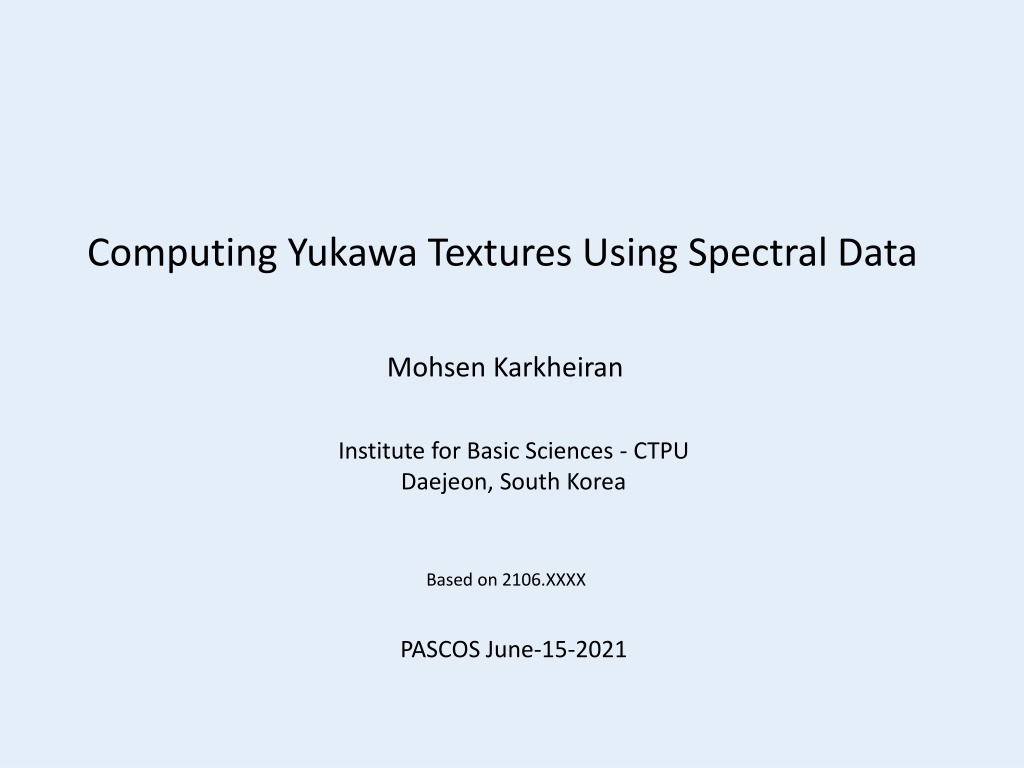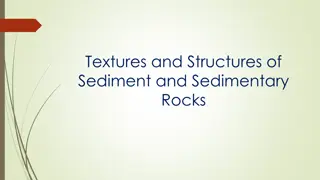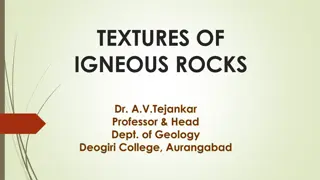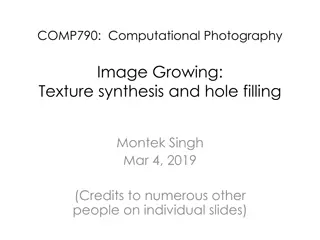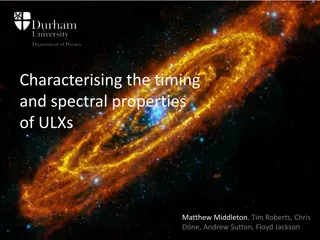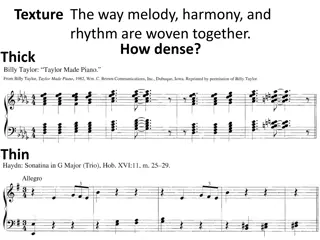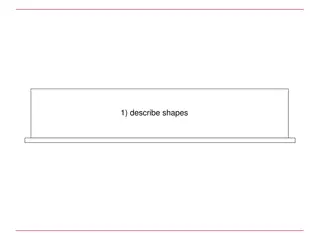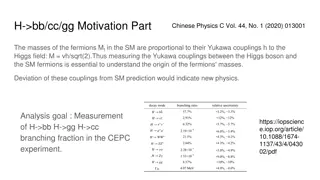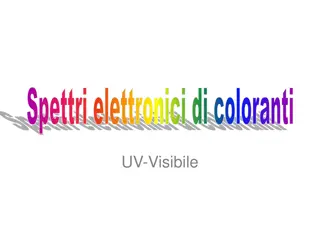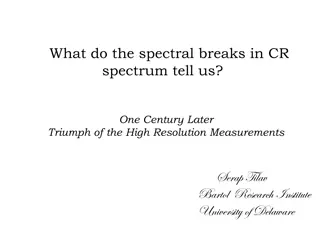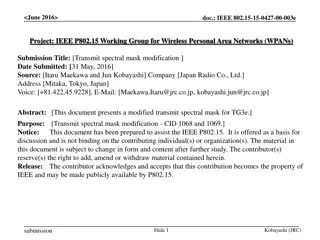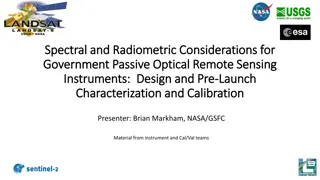Understanding Yukawa Textures and Spectral Data in Computing
Exploring the low energy limit of the Heterotic string, focusing on Yukawa couplings and spectral data in the context of Calabi-Yau threefold and Weierstrass elliptically fibered CY3. The goal involves direct computation of challenging cohomologies and utilizing Fourier-Mukai transform for bundle construction. The spectral data analysis provides insights into stable, holomorphic bundles over different manifolds.
Download Presentation

Please find below an Image/Link to download the presentation.
The content on the website is provided AS IS for your information and personal use only. It may not be sold, licensed, or shared on other websites without obtaining consent from the author. Download presentation by click this link. If you encounter any issues during the download, it is possible that the publisher has removed the file from their server.
E N D
Presentation Transcript
Computing Yukawa Textures Using Spectral Data Mohsen Karkheiran Institute for Basic Sciences - CTPU Daejeon, South Korea Based on 2106.XXXX PASCOS June-15-2021
Introduction Low energy limit of the Heterotic string is a 10 dimensional supergravity with ?8 E8 or ????(32)/?2 gauge groups. The field content is, Gravity Multiplet: ???, ???, ?, ??, ? Gauge Multiplet: ??, ? In particular if ? = 0 and ?? = 0, (? = ?? + ?? ??), we need to have a covariantly constant spinor on the 6d (or 4d) internal manifold, ?? = 0 Calabi-Yau threefold (twofold) ?. The solution for the ?? = 0 gives ? ??? ??= 0. ???= ? ? ?= 0, These are satisfied by a holomorphic and stable vector bundle ?.
Yukawa Couplings Goven a 4? Heterotic ?8 ?8 model ?,? , the (holomorphic) Yukawa couplings in EFT is given by ? ? ? ? ? ? ? 1 2 3 Therefore, in terms of cohomologies, ??(3) Bundle ? ?1? ?1? ?1? ?3 3? = ?3,0? = ?? ?? ???6 ??(4) Bundle ? ?1? ?1? ?1 2? ?3 4? = ?3,0? = ?? ?? ????(10) ??(5) Bundle ? ?1? ?1? ?1 3? ?3 5? = ?3,0? = ?? ?? ???(5) ??(5) Bundle ? ?1? ?1 2? ?1 2? ?3 5? = ?3,0? = ?? ? ???(5)
Goal Direct Computation of these cohomologies can be very hard. Anderson et.al The relation with the Yukawa coupling in other string theory models is obscure. Since most of Calabi-Yau threefolds constructed so far are elliptically fibered, we use another approach. Anderson et. al, Taylor et. Al,
Spectral Data Let ?:? ?2 be a Weierstrass elliptically fibered CY3. ? Stable, Holomorphic, Degree Zero bundle over ?. Instead of constructing the bundle directly one can use the Fourier-Mukai transform, ? ?? ?1 ?2 ? ? ? ?) ? ? ?? ? ??2 (?1 ? ?1 ? ? ?2 1 Given ? as above with rank ?, its Fourier transform is a Torsion sheaf which is supported over finite cover of ?2: ? = ??? [ 1]
Spectral Data ? = ??3 [ 1] ??3:?3 ? : A coherent rank one sheaf over ?3. ?3: A finite cover of ?2 of degree 3. F-th, 7-brane local data is given by the Hitchin system (?,?) equivalent to the spectral data ?, . The neighborhood of the zero-section of ? is mapped to ???(??). Beasley, Heckman, Vafa 2008 Donagi, Wijnholt 2008
Pontrjagin Product ? ? ? ? ?: Smooth elliptic curve. ?1 ?2 ? ?,? ? ? ? ? ?2 ?) ? ?? (?1 ? = (?)[+1] Naively for an elliptic fibration this formula generalizes to, 1[+1] ? = ? ??
Cohomologies Pontjagin product cannot be used over singular fibers of ?. More precisely the group law is only valid for the smooth points of the singular elliptic curve. This is not too bad, 1. We only need anti-symmetrized product. 2. Only the restriction of the spectral sheaf over the zero section ? contributes to the Cohomology of the bundles. ?,?= ???2,??? ? ??+?(?,?) ?2 ?0?,? = ?0(? ?) 0 ?1? ? ?1? ?0?1? ? ?2? ? ?2? ?1?1? ? 0 ?3? = ?2(?1? ?) ? ? ? = ??? ? = ??? ??2 [ 1] ??:? ?
Cohomologies 1[ 1] 2? = ??2 ? ??2 ?? 1[ 1] ?? 2? = ??? ??2 ? ??2 ?? ?,?= ???2,??? 2? ??+?(?, 2?) ?2 The idea is to compute ?1? and ??( 2?) in terms of the spectral data using the Leray spectral sequence and the pushforward formulas.
Smooth Spectral Cover Consider the ?6 model (??(3) bundle ?), ?3= ?3? + ?2?? + ?0?3 ? = ??3 [ 1] ?1? ? = ??3 ? ?2 Matter curve: ?? If ?3 intersects a generic fiber at ?1,?2,?3 S.T ?1+ ?2+ ?3= 0 , then ? 2? intersect at, ?? ?1+ ?2, ?1+ ?3, ?2+ ?3. ?1+ ?2= 0 ?3= 0 1 ?1? 2? = ??? ? ?? ? ?? ? 2?= ?3? + ?2? ? + ?0?3
Smooth Spectral Cover ?1? ?1? ?1? equivalently ?1? ?1? ?2( 2?) This map cannot be non-zero Vanishing Yukawa coupling ?? ?? ?? Similarly for ??(4) bundle one can do a similar analysis to show there are non- vanishing ?? ?? ??Couplings on the intersection of the curves ?4= ?4?2+ ?3?? + ?2??2+ ?0?4 ?4= ?3= 0 For ?? 5 models ?? ?? ? Yukawa couplings are zero for similar reasons as in ??(3) but ?? ? ? will be non-zero over the intersections of the following curves 2= 0 2 ?2?3?5+ ?0?5 ?5= ?5?? + ?4?? + ?3??2+ ?2??3+ ?0?5 ?5= ?4?3
Singular Spectral Covers ?? can be reducible and even have non-reduced components. In such cases we can always express the spectral sheaf as an extension of simpler parts. ??= ? ?? 1 0 ?? 1 ??? ? ??? 1 ? 1 0 0 ?? 1 ??? 1 ? 1 ??? ? ???? ? ??? 1 ? 1 ???? 1 ? 1 0. The idea is to construct all spectral data iteratively using such relations. At the intersection of the components of ?? there can be singularities, generically they do not contribute in the Yukawa couplings, therefore we assume from now on the spectral sheaves over each components is a smooth line bundle.
Singular ??(3) Spectral Data Reducible ?3 with Reduced components: 0 1 3 2 0 0 ? ? 1 2 3 ? 3 ?? ???(? 2) 0 ?3= ?(?2? + ?0?2) In this case there are possible?? ?? ??couplings from interaction of Bulk and local zero- modes localized on ?2= 0: 1 ?0?2,??2=0 2 ?1(?2,??2=0 2 1 ?? 1) ?1?2, 1 ?? For non reduced spectral cover it is possible to have couplings coming from the bulk zero modes. ?3= ?0?3
Caveats The possible non-vanishing couplings means one should compute whether the corresponding Cohomologies are non-zero and whether they contribute in ?1(?) and/or ??( 2?). The analysis so far is restricted to CY3 manifold with at least a holomorphic section.
Elliptic CY3 w/ Non-Holomorphic sections. Non-holomorphic section wrap around rational curve(s) in the fiber. Over such fibers the restriction Poincare sheaf doesn t parametrize the (semi)- stable. To cure this one can modify the kernel of the integral transform, ? ? ?1 2??1/? ?2 ?1 The effect of this twist is that the restriction of ? on the ?2 fiber is a well defined Poincare sheaf.
Elliptic CY3 w/ Non-Holomorphic sections. The Fourier transform of ? with this new kernel will not be sheaf in general, ? ??2 ?1 ? ? = : 0 1 2 0 Where 1 can wrap the components of the reducible fibers.
